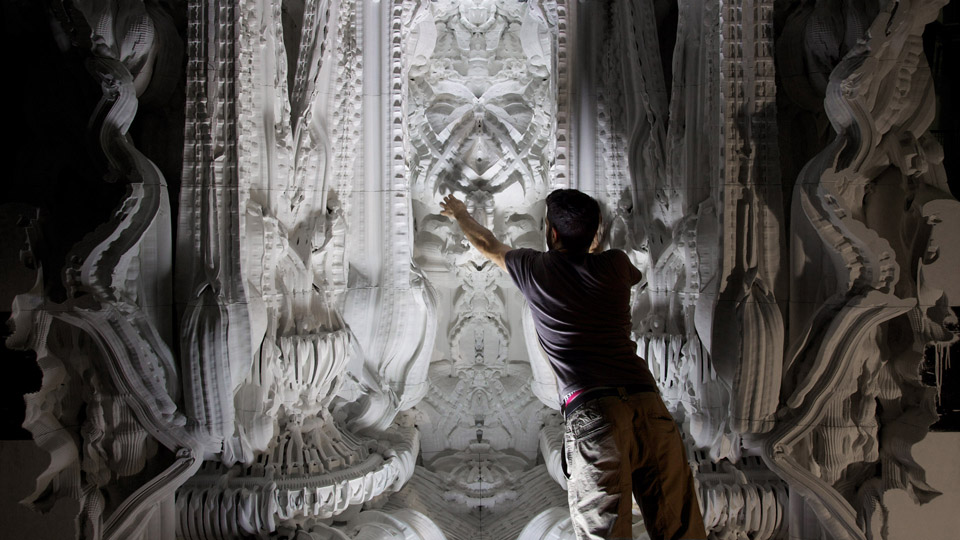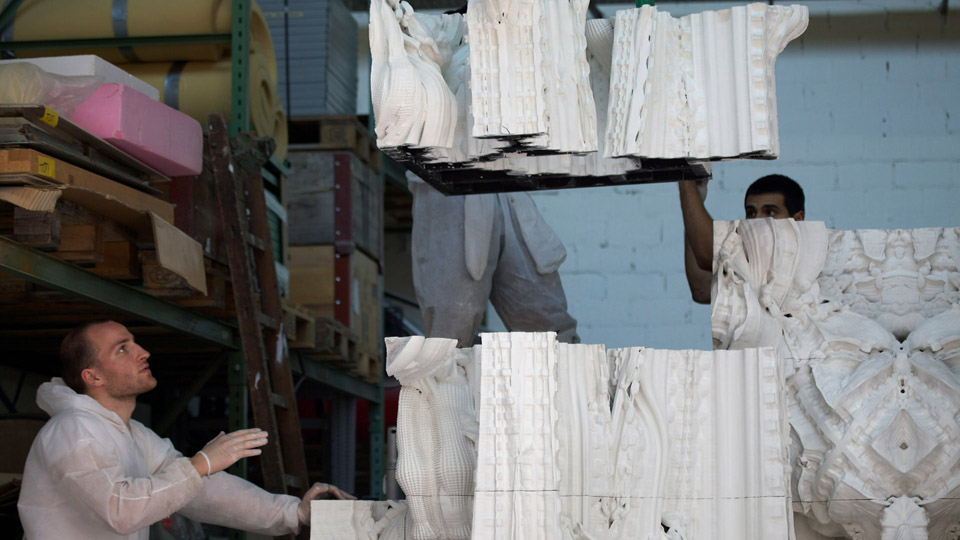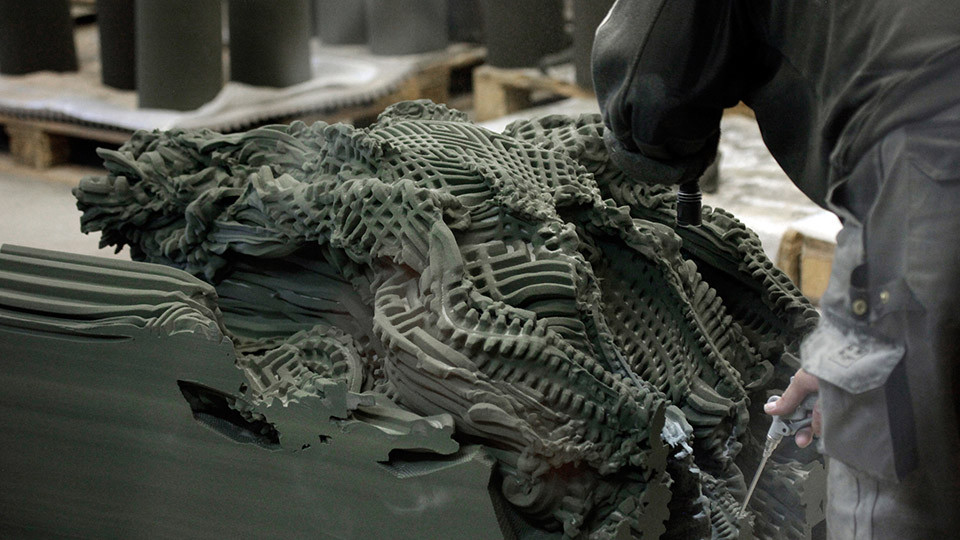On the 3D-printer printed room from artificial sandstone
The goal of the project by Swiss designers and programmers Michael Ansmeyer and Benjamin Dillenburger " Digital Grotesque " is to explore the possibilities of 3D printing in architecture. Their room, or rather, an artificial grotto, covers an area of 16 square meters and is 3.2 meters high. The room is made in the style of the compatriot of the authors, the artist Hans Rudolf Giger - the creator of fantastic and frightening pictures, the most well-known to the general public for the scenery for the film “Alien”.
There are no walls, no ceiling, no corners in the room — it is all a space of two symmetrical halves, filled with an interlacing of subtlest patterns generated on a computer and printed using a 3D printer. The raw material is fine-grained sand, and therefore the final product in its properties resembles sandstone - a material that has been used in construction for thousands of years. The computer model of the grotto consists of 260 million polygons. Creating such structures in the traditional way, if possible in principle, would be worth a huge investment of time and labor. 3D printing makes them available even in mass construction.

The room consists of separate blocks. The 3D printer used in this project is designed to create casting molds and can print parts up to eight cubic meters with an accuracy of 0.1 mm, but the block size is much smaller for reasons of ease of assembly and transportation. The blocks are placed on a standard pallet for a forklift, and each of them can be lifted and replaced into place by four people manually.
')

The design of the blocks is made as easy as possible by computer simulation - the blocks are hollow, and in places that do not carry the load, the wall thickness is less than a centimeter. The blocks have holes for fixing the fixture, which securely fixes the entire structure, and conical protrusions and depressions, which help to combine the blocks, like Lego parts. For strength, the finished blocks are impregnated with a special resin, which is used to protect structures made of natural sandstone.

All the fantastic patterns that make up the grotto are algorithmically generated. Traditional architecture is called frozen music. Digital Grotesque can be called a frozen math. The authors themselves had to write software to create and process the model - standard CAD applications could not cope with such a volume of small parts. The surface of 260 million polygons has self-intersections, and in order to convert this surface into volume, an algorithm was used that simulates the pouring of a mold with a liquid — the parts that remain “dry” are considered internal, and the “wet” ones are external. For these calculations, we had to transform the model into a voxel form consisting of 30 billion volume pixels of 1 mm in size.
There are no walls, no ceiling, no corners in the room — it is all a space of two symmetrical halves, filled with an interlacing of subtlest patterns generated on a computer and printed using a 3D printer. The raw material is fine-grained sand, and therefore the final product in its properties resembles sandstone - a material that has been used in construction for thousands of years. The computer model of the grotto consists of 260 million polygons. Creating such structures in the traditional way, if possible in principle, would be worth a huge investment of time and labor. 3D printing makes them available even in mass construction.

The room consists of separate blocks. The 3D printer used in this project is designed to create casting molds and can print parts up to eight cubic meters with an accuracy of 0.1 mm, but the block size is much smaller for reasons of ease of assembly and transportation. The blocks are placed on a standard pallet for a forklift, and each of them can be lifted and replaced into place by four people manually.
')

The design of the blocks is made as easy as possible by computer simulation - the blocks are hollow, and in places that do not carry the load, the wall thickness is less than a centimeter. The blocks have holes for fixing the fixture, which securely fixes the entire structure, and conical protrusions and depressions, which help to combine the blocks, like Lego parts. For strength, the finished blocks are impregnated with a special resin, which is used to protect structures made of natural sandstone.

All the fantastic patterns that make up the grotto are algorithmically generated. Traditional architecture is called frozen music. Digital Grotesque can be called a frozen math. The authors themselves had to write software to create and process the model - standard CAD applications could not cope with such a volume of small parts. The surface of 260 million polygons has self-intersections, and in order to convert this surface into volume, an algorithm was used that simulates the pouring of a mold with a liquid — the parts that remain “dry” are considered internal, and the “wet” ones are external. For these calculations, we had to transform the model into a voxel form consisting of 30 billion volume pixels of 1 mm in size.
Source: https://habr.com/ru/post/194108/
All Articles